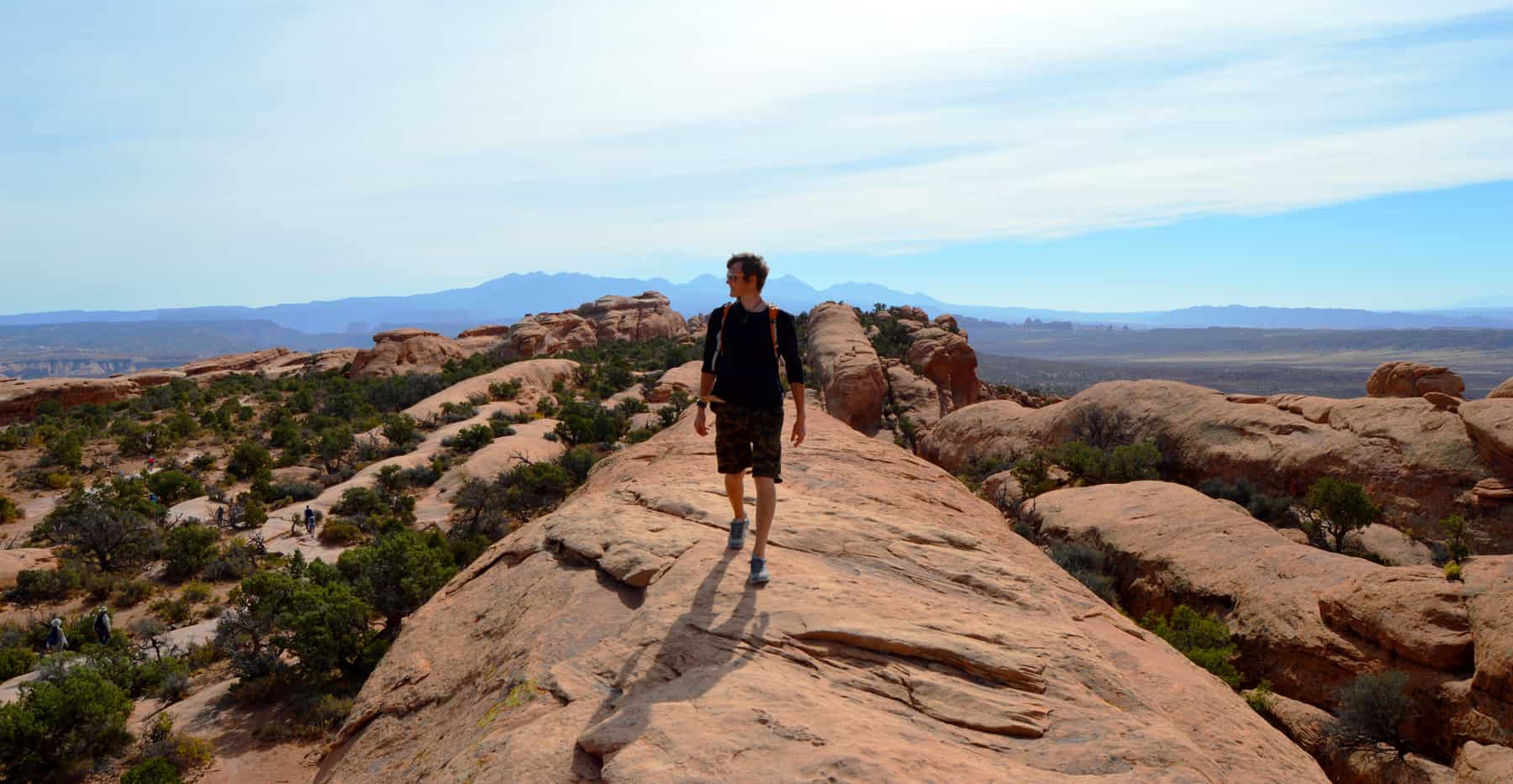We weren’t quite sure last summer was even going to happen. Gone were the daydreams of sharing beach time with extended family or jetting off to an exotic destination to experience something other than mountain culture. Yet, for a brief moment in time, it seemed like COVID let its guard down, as mountain families moved outside and into the sun, making it harder for the virus to spread. We stayed diligent as a community and looked out for each other, while ultimately determining to make the summer—full of all its memory-invoking activities—as normal as we possibly could.
What happened in the making of normal resulted in way less planning, much more spontaneity, and, for some, the forming of deeper connections. We concentrated less on all the memory-making details and reveled more in that fact that we made better traditions out of less-elaborate plans.
Here are some of our stories …
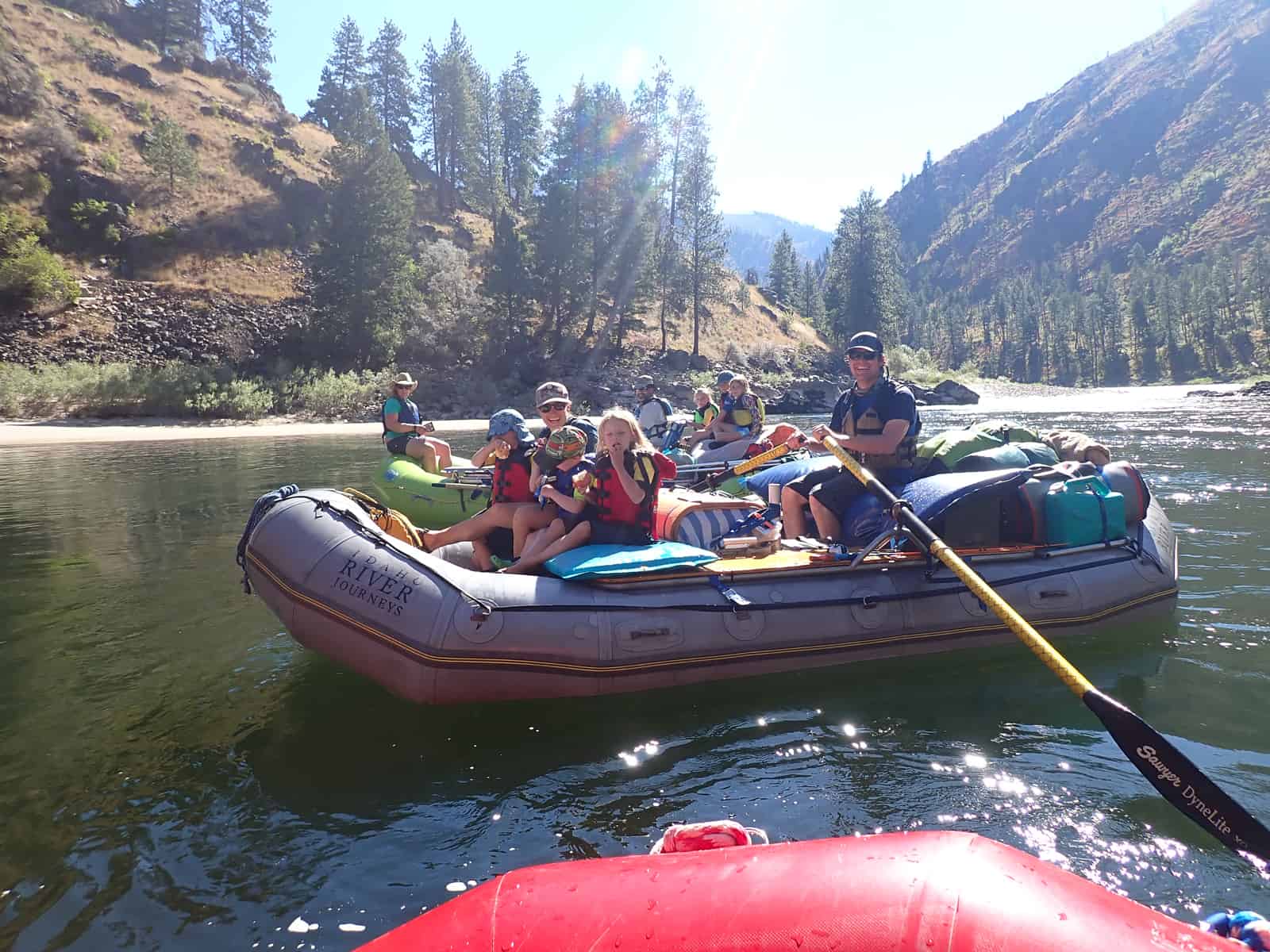
Lottery Season
By Deb Barracato
—
As a shy girl ordinarily anxious in unfamiliar situations, I experienced the full magic of summer camp and the possibility of personal reinvention. That lakeside bubble of rustic cabins and instant friends connected by childish shenanigans and midnight pinkie swears inspired me to show up as the gregarious person I imagined. Summer after summer, those weeks away from “real life” whittled at my self-consciousness and eventually helped shape a reasonably confident teenager.
As a middle-aged “trending introvert,” I still crave immersive experiences that pull me away from my everyday reality and smooth out the fraught edges of life. A week floating the Main Salmon River last August with my son, Nathan, old friends, and “instant friends” provided respite from a world jumbled by COVID-19. Like so many, I felt the effects of prolonged isolation and the stress of lingering uncertainty.
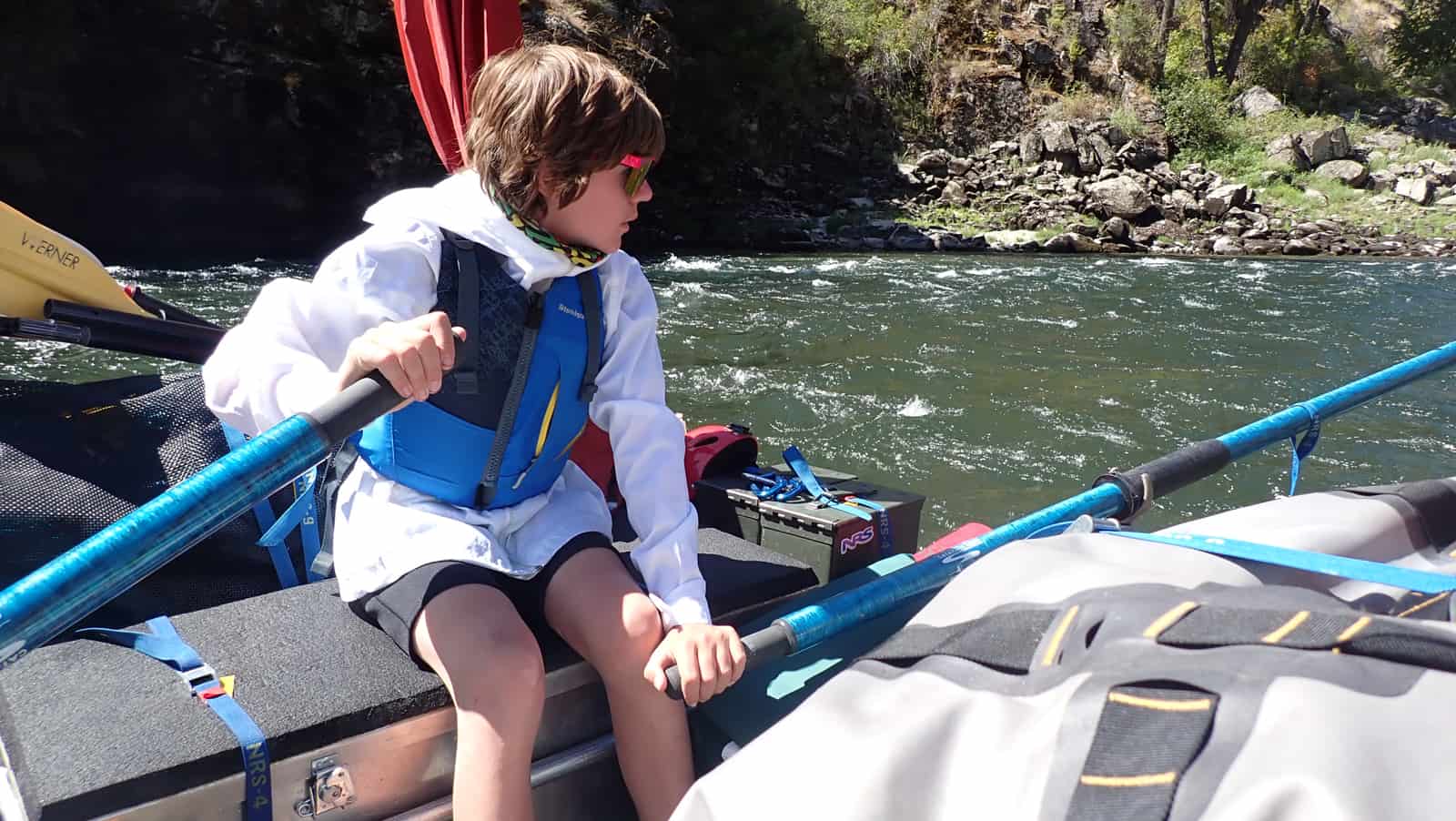
Just one day on the river eased the tension of the previous five months—which isn’t to say we threw caution to the wind. We enforced strict handwashing protocols. We limited the number of people in the mesh-sided kitchen tent. We positioned our camp chairs and sleeping pads in family clumps. We wore masks when we couldn’t avoid prolonged close contact or other river groups.
But we shared meals and played games and socialized in a way I had taken for granted before COVID. I had forgotten how good it could be to just hang out.
After unloading the boats in camp each day during the blazing heat of early afternoon, we would assemble under whatever scrap of shade we could find to literally “while away the time.” The little kids played in the sand at the river’s edge, while the teenage boys postured over bocce and endless replays of their runs through the rapids. Once the sun moved far enough west for the mountains to cast a comforting shadow on the beach, we would all re-emerge from our makeshift cocoons to prep camp for the evening. The day’s appointed cooks set out snacks and went to work assembling dinner while the rest of us readied our patch of sand for the night or gathered around the firepan, laughing at newly minted inside jokes and trying to one-up each other with our creative cocktails. At home I grappled with pandemic-imposed monotony, but the steady pace of days on the river invigorated me.
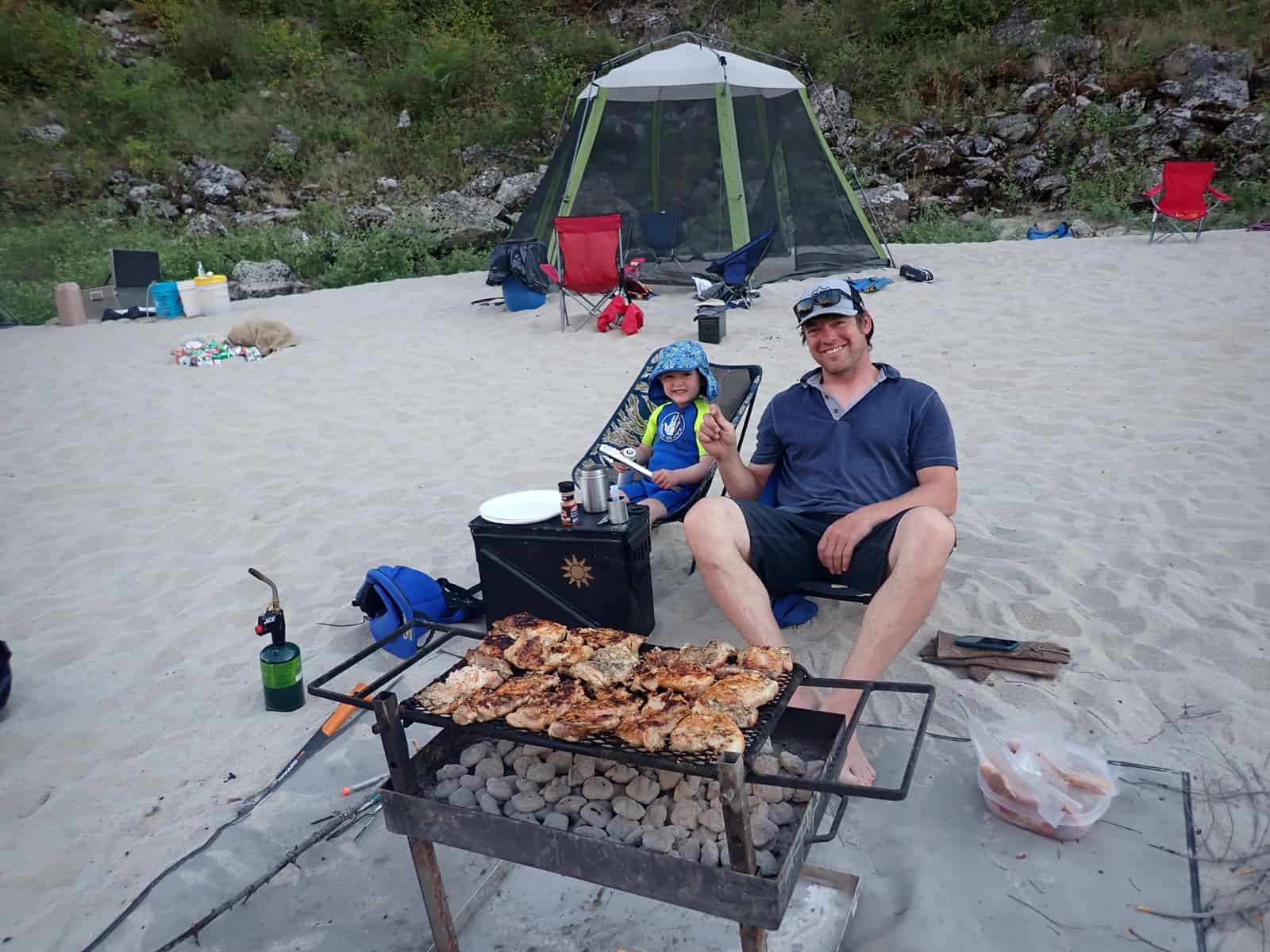
“You’re my favorite river peops!” I told my “instant friend” Colleen one night near the end of the trip in a rush of camp love (likely unleashed by the particularly tasty adult beverages she had served). “Aren’t we your only ‘river people’?” she asked with a wry chuckle. “Well, yes,” I admitted, “but even if I had others, you’d still be my favorites!”
And it’s true. Just like with the friends I made at summer camp all those years ago or the many familiar strangers I’ve connected with along the international backpacking trail, for me, sharing adventure creates an effusive sense of tribe.
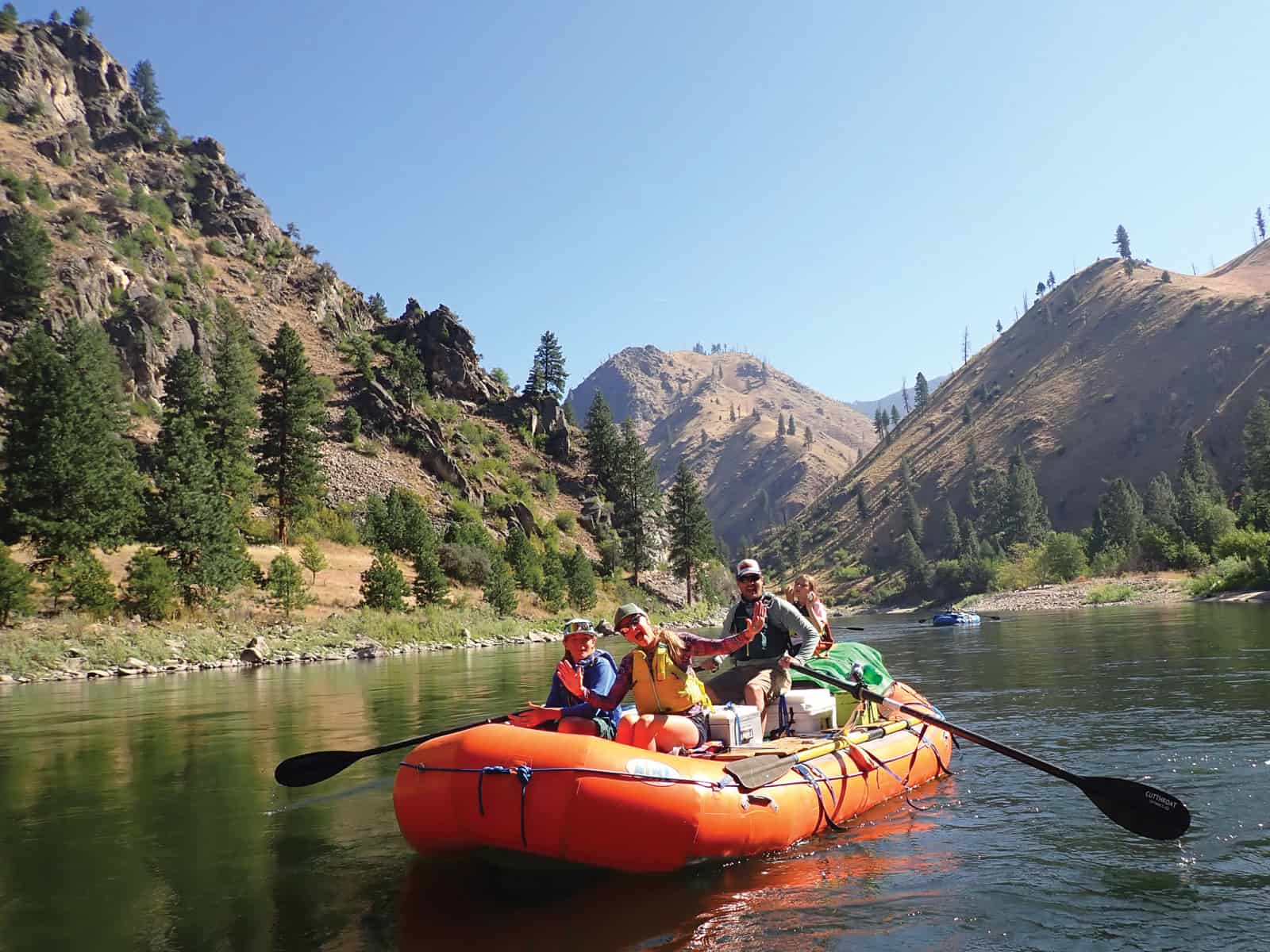
It’s lottery season as I write this, and if I win one of the rare and precious permits, my “peops” will get first dibs on the trip. I’ve been busy visualizing myself on the water in an effort to manifest positive results. As self-proclaimed “river people” without a boat, Nathan and I need the “golden ticket” permit to guarantee our trip this coming summer. Or magnanimous friends who love us back.
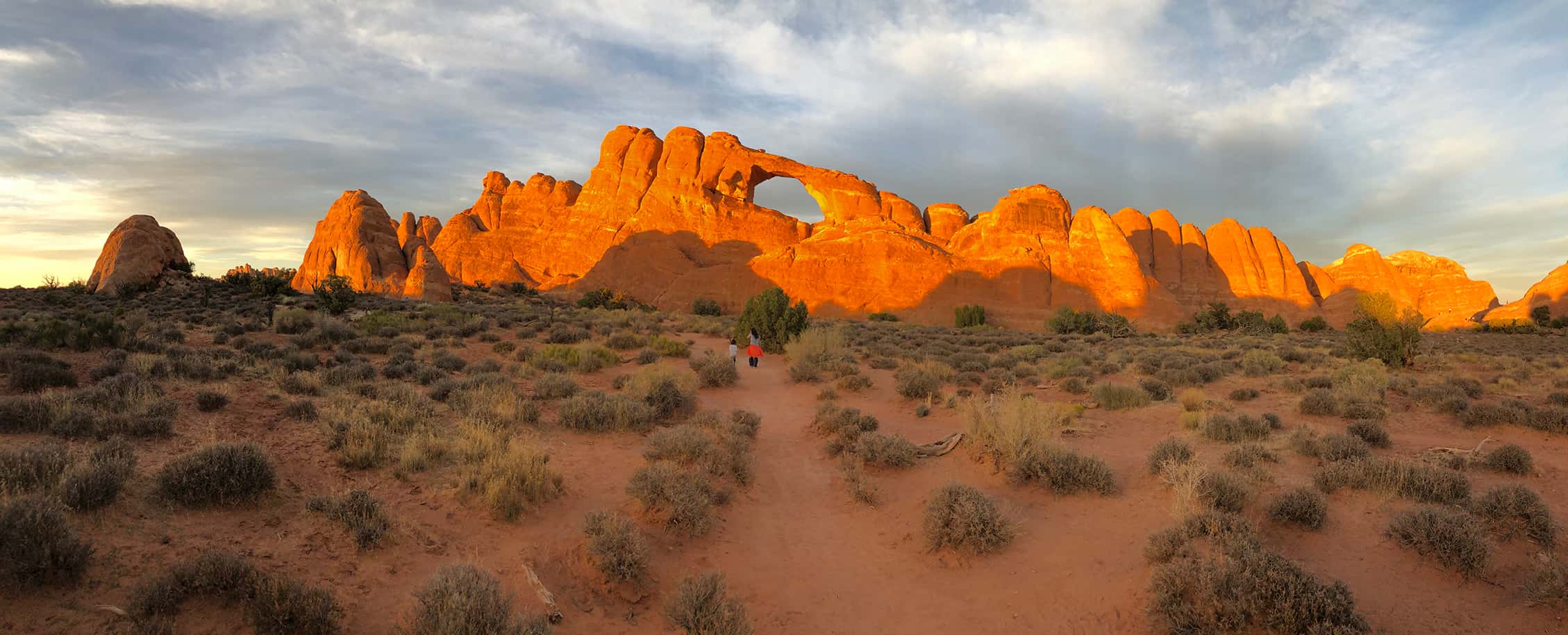
Perception of Motion
By P.M. Fadden
—
Working from a campsite restroom, alone in the cold, dark desert, lends perspective to a dawn. But that’s the taxing triumph of this particular family trip.
Our crew consisted of myself (Paul), my wife Maria, and our five-year-old, Luna. Hazed by prior months of isolation, our wee tribe longed for normalcy, so we hatched a plan with an elemental purpose: propulsion. No more, no less, and no frills. Each of us prepared a small pack; we all piled aboard a battered but trusty truck nicknamed “Jill-a-Boo;” and Luna dictated the soundtrack.
We may have aimed east-ish but there was no real direction. What mattered most was to obtain a sense of movement. Every mile put behind us only made us want two more. Until finally, after twenty-six bathroom stops, ninety-seven singalongs, and about 500 miles, the Black Hills of South Dakota rose to claim a tranquil skyline.
Outside, the wind picked up, the sun sank, and the land lit up. Part of me wished that the rolling Loop Road (the Badlands Loop State Scenic Byway) never ended. Contented silence filled Jill-a-Boo, even Luna felt its peace. Said simply, it was color alive in open space—and it painted a pathway straight to a quirky town called Wall.
An eddy in the stream of time, what struck me upon entering Wall, South Dakota, is the obvious ingenuity behind its survival. It’s a tiny town built around a famous drug store. And one glance affirms that Wall Drug—with its handmade pastries and five-cent black coffee—will outlast us all. After all, dodging the perils of modernization must be an easy puzzle after the woolly days of the Old West. Just serve people house-made donuts, and then wait for what comes next.
Next on our list was mighty Mount Rushmore, an icon that’s gone by five different names to date and has fostered a minor league baseball team. Within the rock itself sleeps an incomplete secret vault once intended to house its nation’s most precious treasures. Yet, standing before its enormity, it was Luna’s wisdom that resonated the most. She studied the faces before her noting plainly that it wasn’t the giant faces that surprised her, but rather the fact that they weren’t smiling.
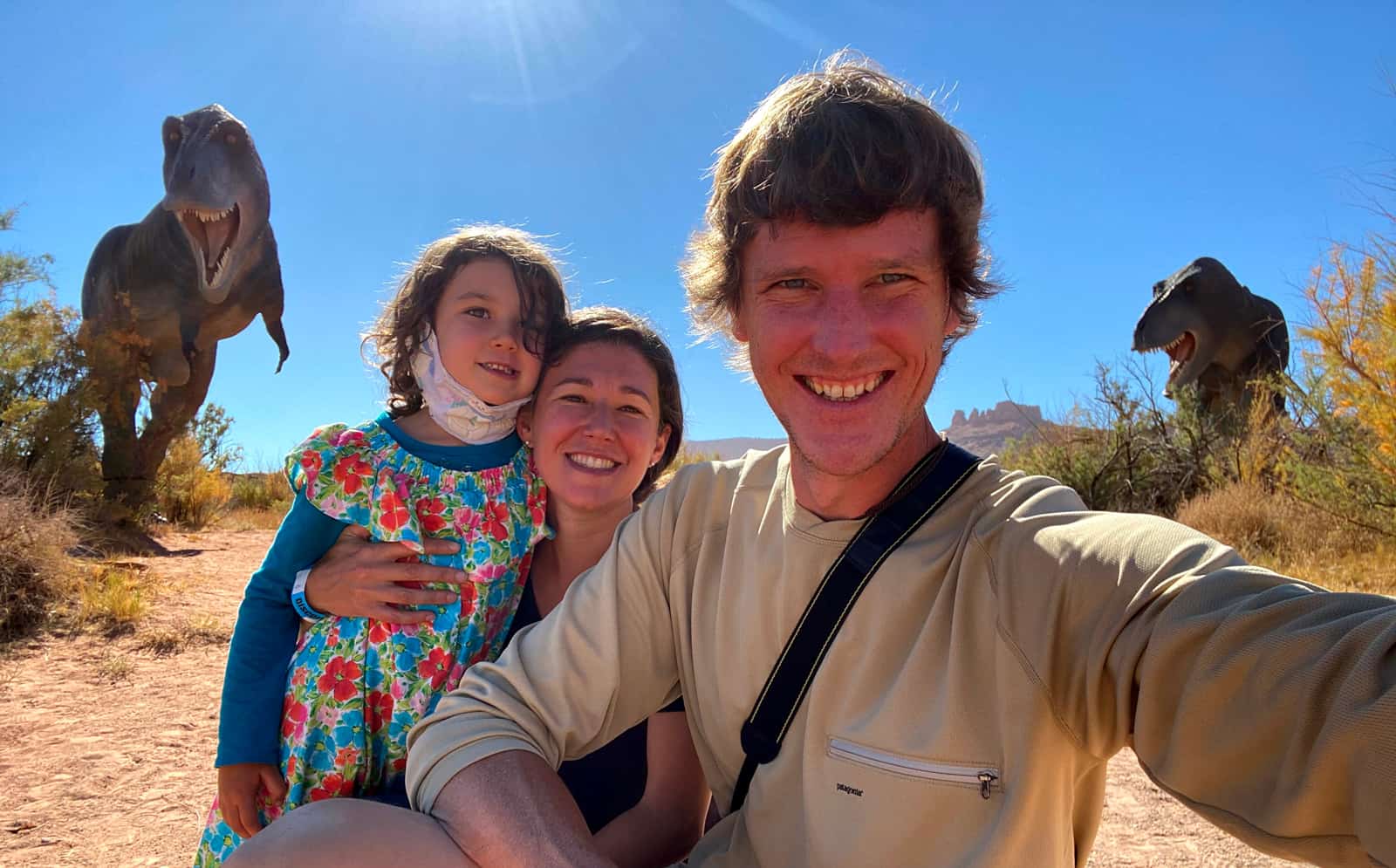
Though this odyssey includes toiletries in cup holders and sleeping sacks unfurled above four wheels, I still felt like a fraud of van culture. Jill-a-Boo is a far cry from the super campervans we found co-mingling between the expanse of South Dakota and the closer-to-home bustling Yellowstone.
On the way back west, we decided on Yellowstone Lake for the night’s campsite. From its long, empty shore, Maria and I watched Luna splash, while the horizon turned maize to ocher, and pondered why we had chosen this place. (The allure of the world’s first national park is obvious, but to visit required some soul searching, as we knew it would contain a frenzy of people.)
A visit to Grand Prismatic Spring was a childhood dream of my Argentinian wife, Maria. And now, she found herself in its same nation living within easy driving distance of its splendor. Still, she wasn’t the sole spectator making the pilgrimage. Though the hot spring viewing platform was busy, it was the unmasked fellow traveler wearing glittering high heels while wedging her way through onlookers that convinced us of a rueful truth: wondrous as Yellowstone is, that which would move us was hidden elsewhere.
Traveling farther down the road seems an easy enough concept, but rather requires respectable endurance, especially from a young child who only understands the fact that she’s been strapped in the seat of a truck for an awfully long time. That vibe of angst takes a variety of forms and naturally infiltrates the routines of setting up camp and meal prep. It’s a strain which doubled as an opportunity to practice patience, especially for Maria and myself.
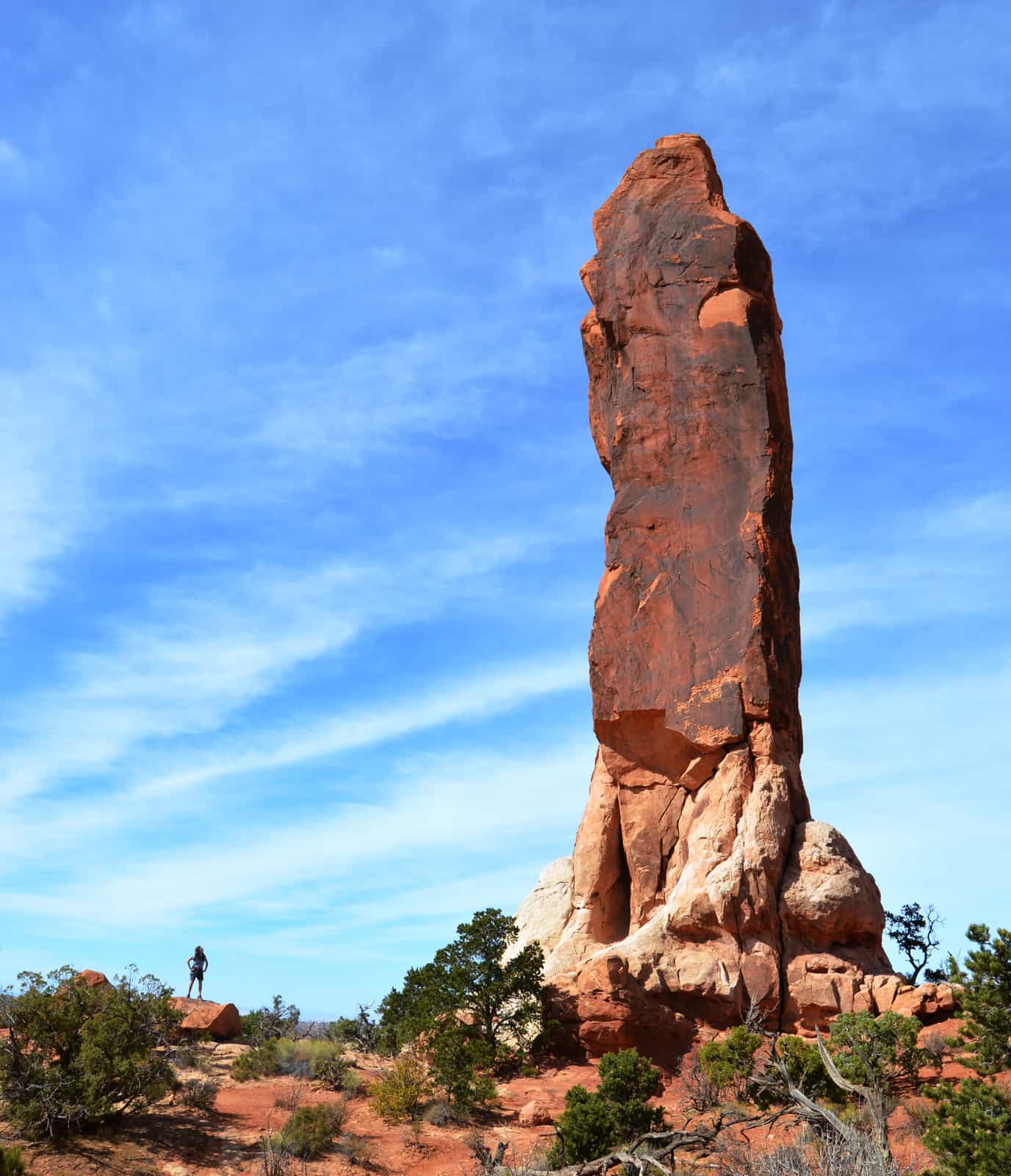
In the blink of a sleepless eye, we were transported to the southwestern desert and its all-encompassing feeling of freedom. Each dawn welcomed a day that was literally skillet-hot, while dusk, on the other hand, felt like a plunge into a night so deep that Luna practically slept in Maria’s hip pocket, while I scribbled by torchlight from a public restroom.
Looking back, I’ll joke about my desert office space.
As uncomfortable, improbable, or weird as it was to wake at 4 a.m. to pen a tale from a campground water closet, there is simply no escaping the vibrant beauty of the Utah desert. Its life seeped so far inside of me that later, while unpacking bags and washing dishes, I could still feel its pace.
Make no mistake, once home, we were glad to be back, but we missed the Loop Road all the same. While Luna indulged in the creature comforts of her bed, she also longed for her sleep sack that served in its place while on the road. Maria easily settled in to read on the deck, with thoughts dwelling on prior views. As for me, I edited from the comfort of my desk chair—polishing words first penned with shivering fingers—an experience which may forever alter my perception of motion.
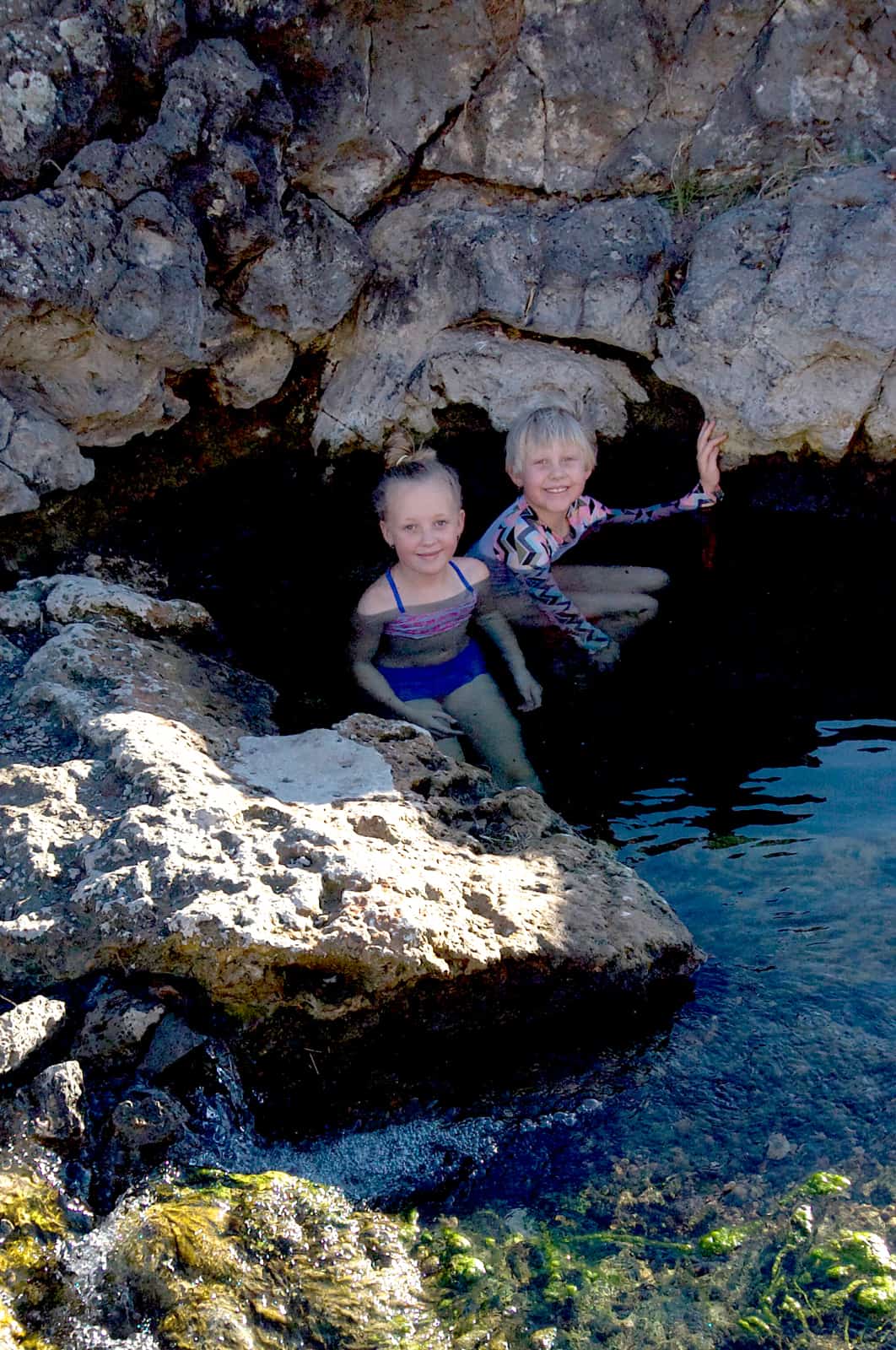
Soaking in Solitude
By Emily Nichols
—
Our family was feeling antsy six months into the pandemic. We didn’t want to hop a plane or visit a place that was congested with people. We needed something outdoors and new. So, my daughters, Ida and Hazel, and I planned a central Idaho hot springs tour. And since Idaho has the most usable natural hot springs in the nation—about 130 soakable pools—that gave us many to choose from.
After a quick search for lodging reservations, we were off and running. We decided to make a home base in Stanley, Idaho, as there are numerous natural hot spring pools in the region, various hotels and guest houses, and abundant camping opportunities. I booked us at the Sawtooth Hotel for our first night—a fun and funky spot with just a few rooms and an excellent restaurant.
We left Teton Valley late in the afternoon on a Friday and made our way up the east side of the Idaho National Laboratory site through Arco, heading west through Craters of the Moon National Monument & Preserve.
Our first hot springs stop was just east of Carey, Idaho, on Highway 93. Wild Rose Hot Springs (sometimes called Milford Sweat Hot Springs) is free, but it’s located on private property. The landowner graciously allows the public to use it, so we were careful to be respectful of the space.
Ida and Hazel were excited to explore our first spring. Already wearing their suits under their clothes, they hopped out of the car, grabbed towels, and followed the goat trail down the hill. You cannot see the pools from the parking area, but they are just a short walk away. Excitedly, the girls entered the biggest pool, where they explored the lava-rock lining. We enjoyed a quick dip in this toasty spot, and then made our way on down the road.
After a good night’s rest in the Sawtooth Hotel (very mask-conscientious and clean), we walked down to the Stanley Baking Co. to eat a delicious meal on the deck in the fresh mountain air. The girls and I made a plan for the day—to drive about an hour to Kirkham Hot Springs, and then return to Stanley to check out some local hot spots in the afternoon.
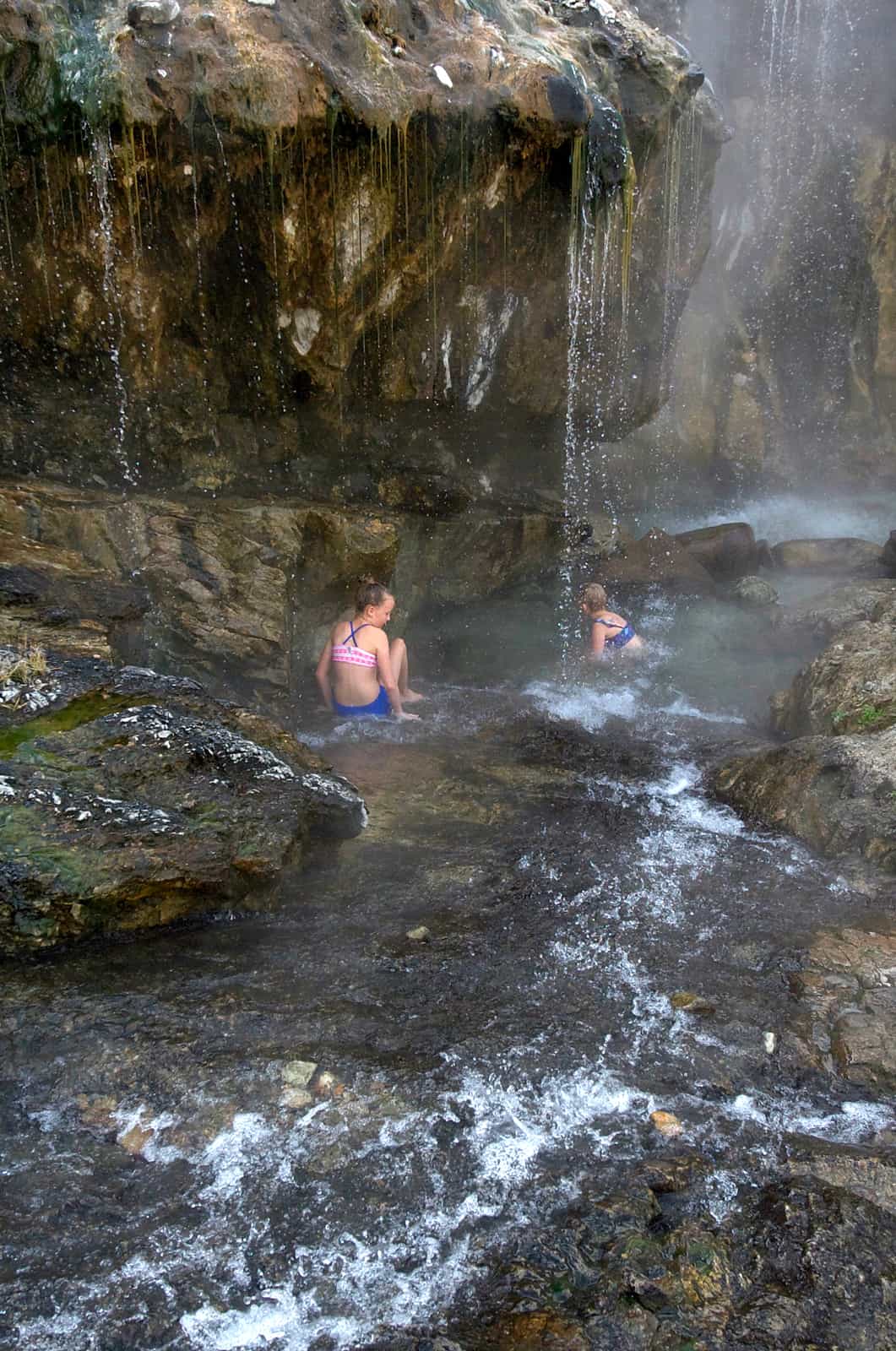
Kirkham is one of Idaho’s most famous hot springs, known for its hot waterfall and multiple soaking pools. The Ponderosa Pine Scenic Route (Highway 21) was perfectly paired with our favorite tunes, as we wound along the mountain roads. Once we arrived, we found ample parking and a campground, which gave us the clue that Kirkham was a popular destination. The pools varied in temperature and size and were nestled along the bank of the Payette River near Lowman, Idaho.
Although there were quite a few folks soaking on a Saturday morning, we were able to find multiple pools to explore on our own. Ida and Hazel were wonderstruck by the cascading hot waterfall showering over the hillside creating perfect pools and smooth spots to slide. The pools bordering the river had breathtaking views and came in varying temperatures, as the cool river water swirled through the rocked-off soaking area. We found everyone we met to be very friendly and conscientious, and we enjoyed the opportunity to safely be around people while basking in nature’s beauty.
My girls sleepily gazed out the window at the trickling light through the pines as we wound our way back to Stanley. We ordered some pizza and sandwiches from Papa Brunees and planned our afternoon soak. Boat Box and Sunbeam Hot Springs were just a few miles out of town along Highway 75. We heard from the locals that Boat Box can only accommodate a few soakers in its single metal cauldron. We found the small parking lot on the banks of the Salmon River already filled with several cars when we arrived. So, onto the next option we went, just three miles down the road.
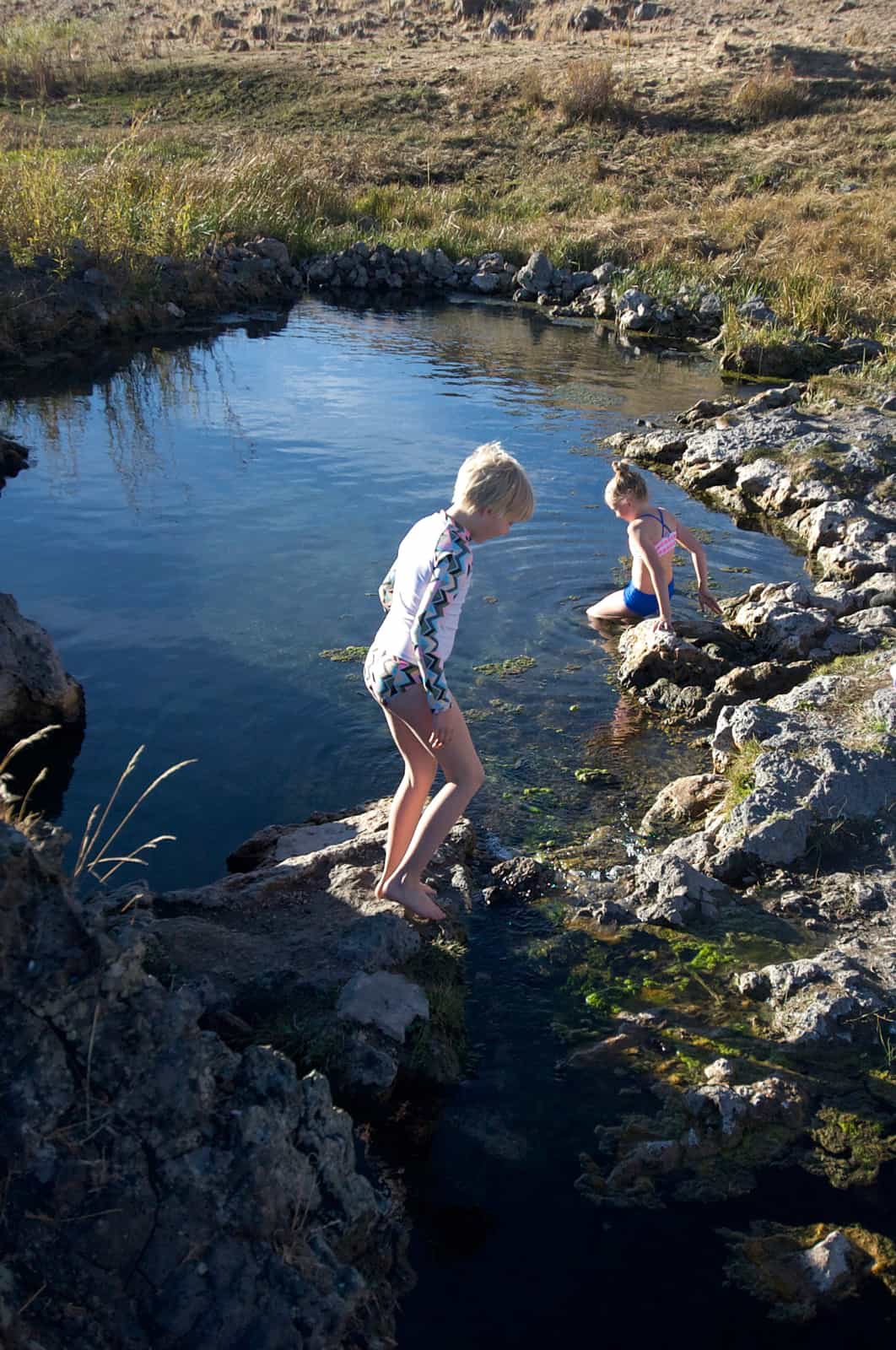
Sunbeam Hot Springs is located in a beautiful canyon in the Salmon-Challis National Forest, has ample parking, and boasts a covered picnic spot perfect for inclement weather. When we arrived in the late afternoon there were around a dozen people soaking in the rock-lined pools along the river. We were warmly welcomed to join and there was plenty of room to stay distant. As time passed, folks gathered their belongings and made their way back to their vehicles on the hillside above, leaving us with our own private hot spring. Each of the pools differed in temperature, depending on their proximity to the hillside’s source of hot water.
As the sun sank in the canyon, rosy-cheeked and pruney-fingered, we begrudgingly made our way out of the pools, dried off, and changed into warm clothes. Back down the canyon we went to Stanley, with the sun setting just beyond the Sawtooth Mountains.
On Sunday morning, we decided to rise early to soak one last time before checking out of our hotel and heading home. We tried Boat Box again, but it was full of early morning soakers, so we found our way back to the empty Sunbeam Hot Springs. The chilly morning air made the dip into the hot pools even more splendid and rewarding. We sat quietly, donned in our winter hats and swimsuits, listening to the rush of the Salmon River and a faint raptor circling nearby. The girls searched for sparkling rocks and tested their patience, slowly building cairns as the steam rose into the sky.

